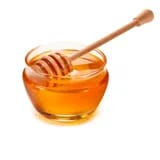Ingredients
Make sure you have...
Utensils
Oven, Parchment paper
recipe

Step 1
Preheat the oven to 200°C. Drain & thinly slice the sun-dried tomatoes.



Step 2
Prepare the samosa filling. In a bowl, combine : the goat's cheese, cream cheese, sun-dried tomatoes & honey.* Lightly season with salt & pepper. *Check out our tips for this step.

Step 3
Cut the phyllo sheets in half - each sheet will make 2 samosas.
Step 4
Take half a phyllo sheet & lightly brush it with oil - you can use the oil from the sun-dried tomatoes. Fold it in half lengthwise. Divide the samosa filling equally to make 3 samosas per person. Add a spoonful of the filling on the edge of the folded phyllo sheet.
Step 5
Fold the top corner of the phyllo sheet to form a triangle. Fold the triangle over again from top to bottom to form a closed triangle. Repeat with the remaining samosas.
Step 6
Place the samosas onto a parchment paper-lined sheet tray. Bake for 15 min at 200°C, until golden.

Step 7
Once golden brown, remove the samosas from the oven. Serve them on a plate with the green salad seasoned to taste. Enjoy !

For a truly flavoursome, we suggest adding canned tuna & seasoning your samosas with "herbes de Provences" or "piment d'Espelette"
- Marcy, Food Editor
Personal notes
Add your own flavor!
Nutrition facts
Average estimated amount for one serving
| Energy | 312 cal. |
| Fat | 17 g |
| Carbohydrates | 24 g |
| Protein | 11 g |
| Fiber | 2 g |
Values are based on an average estimate for one serving. All nutrition information presented on Jow is intended for informational purposes only. If you have any concerns or questions about your health, please consult with a health-care professional.
On average, one serving of the recipe "Goat's Cheese & Sun-Dried Tomato Samosas" contains 312 Energy, 17 g of Fat, 24 g of Carbohydrates, 11 g of Protein, 2 g of Fiber.
Price per portion
| € | Nos recettes à -2 € par portion |
| €€ | Nos recettes entre 2 € et 4 € par portion |
| €€€ | Nos recettes à +4 € par portion |
Please note, the price above is dependent on your grocer and the available products in the grocery store you chose.
Scores


D Nutri-score
The Nutri-score is an indicator intended for understanding nutritional information. Recipes or products are classified from A to E according to their food composition to promote (fiber, proteins, fruits, vegetables, legumes, etc.) and foods to limit (energy, saturated fatty acids, sugars, salt, etc.).
C Green-score
The Green-score is an indicator representing the environmental impact of food products. The recipes or products are classified from A+ to F. It takes into account several factors on the pollution of air, water, oceans, soil, as well as the impacts on the biosphere. These impacts are studied throughout the product life cycle.
Retrieving reviews...



